
When we arrived at College Park, Maryland (our home base during our visit to the nation’s capital), the government shutdown was still underway. We all know Washington, DC is a city rich in museums, monuments, attractions and more. Despite the shutdown there were several interesting things for us to check out. The famous open-air memorials were still somewhat accessible, and several of the non-Smithsonian museums were happy to welcome us. We hate to admit it, but the closure actually worked well for us. There were no crowds, and it was easy for us to do our non-government exploring on the first two days. Then, when the government re-opened, we were able to hit everything else as other tourists began coming back into town. Sometimes timing is everything!

Our first stop made Steve happy, as he had been excited to visit the Bureau of Engraving and Printing (BEP) – which was not affected by the shutdown. The BEP is one of the largest currency printing operations in the world, with facilities in Washington, D.C. and Fort Worth, Texas. All U.S. currency is printed at one of these two facilities.
Photography was not allowed while we were on the actual production floor. We witnessed the printing of millions of dollars as we walked along the galley. During the tour, our guide asked us to pull out a dollar bill and study it as she explained the printing process and security measures taken to prevent counterfeiting. There is a whole lot that goes into the printing, but I won’t bore you with those details.
Instead, lets have some fun – take your dollar out, and let’s decode it. Then you’ll know what all those seemingly random letters and numbers mean!
- The letter “B” inside the circular seal represents the Federal Reserve Bank issuing the bill – in this case, B=New York (A=Boston; C=Philadelphia, etc.).
- A number is printed in four places around the face of the bill, corresponding to the letter in the circle. For example, printed here is number 2 because B is the second letter in the alphabet.
- The note’s serial number also begins with a letter corresponding to the issuing Federal bank, again it’s B in this instance.
- The serial number ends with a letter which identifies the number of times that the BEP used the sequence of serial numbers – A is the first time, B is the second time, C is the third time and so on.
- The “H3” on the upper left quadrant represents the position of the bill on the 32-note printing plate it was on. The “H90” on the lower right quadrant represents the specific printing plate used.
- If this bill had been printed in Forth Worth, Texas, then “FW” would have been printed next to the plate number H90. Is “FW” printed on your bill?
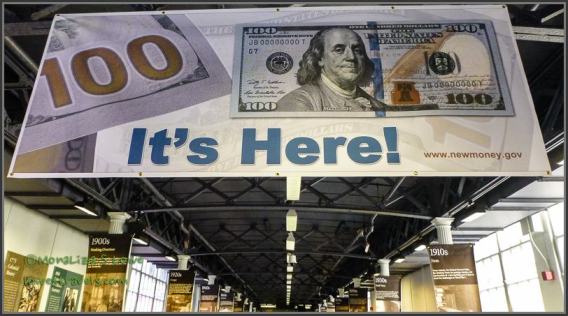
There’s a lot more, but here are a few tidbits I thought interesting to share:
- Paper money is not made of paper, but of cloth – 75% cotton and 25% linen – that is why it survives in the washing machine.
- It cost 5.4 cents to produce a $1 bill and 12.7 cents to produce a $100 bill.
- Estimated life span of a dollar bill is 5.9 years, while a $100 bill survives about fifteen years.
- The Secretary of the Treasury is responsible for the final choice of currency designs, including the portraits.
- On the reverse side, the bald eagle seal contains 13 stars, 13 bars on the shield, 13 arrows, 13 leaves, 13 berries and 13 letters in “E Pluribus Unum” on the ribbon.
Have you seen the redesigned $100 bill just now coming into circulation? If not, it looks like the one pictured above with its two distinctive security updates – the Liberty Bell in the inkwell and the blue 3-D security ribbon running down the note.
We left the Bureau of Engraving and Printing feeling pretty smart about what’s in our wallets. Not only that, I learned that I’m about $1,374,750 tall in $100 notes. Hey, I’m rich!
Have I bored you yet? Okay, then lets move outside to see the sights at the National Mall, the tidal basin and some other popular spots in DC. The National Mall, and pretty much everywhere else we went, looked like ghost towns on the day we were there – the last day of the shutdown. Although we loved the light crowds, the downside was that the public restrooms were locked. Also, the food trucks were nowhere to be found, and we heard some of them are great and wanted to try them out!
Despite the barricades placed at the memorials, visitors pretty much ignored them and just went in – like this tourist, who must be exercising his 1st Amendment rights. Hey, he looks familiar!
The news was reporting that veterans and supporters were taking down barricades around the WWII memorial and dropped them off in front of the White House. Thanks to them we just walked around the remaining barricades and visited them, too. The police stood right there and didn’t say or do a thing.
Just a handful of tourists at the Martin Luther King Memorial…
…and a barricaded and almost deserted Thomas Jefferson Memorial. Oh well, we had both seen most of the memorials before so this was close enough.
The Franklin Delano Roosevelt memorial was also very quiet…
…but as expected, there’s always a crowd at the White House:
Everyone knows that visiting the National Mall and the memorials can involve a lot of walking. Although the sky was cloudy, it was warm and a beautiful day to roam around town. There were no tour buses running because of the shutdown, but we prefer to walk anyway and knocked out over 7 miles!
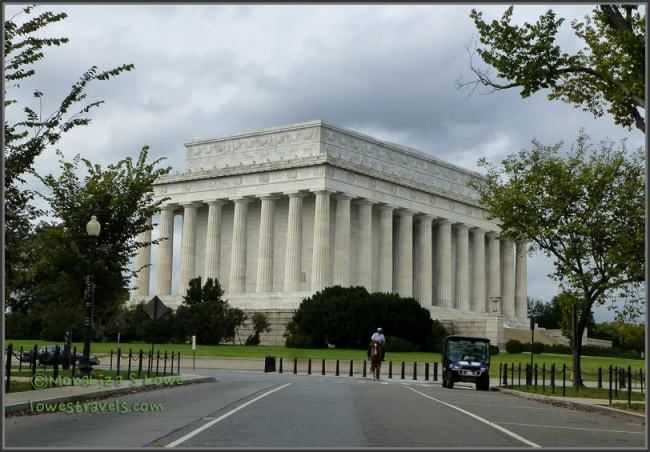
We noticed on this day (Oct. 16th) that there was a lot of air activity. We saw the president’s “Marine One” helicopter and several others fly over a few times, shuttling back and forth from the White House to various locations. We learned later in the evening that the partial shutdown had been lifted and was over. Yay, the government is finally “functioning” again! To the museums we go!
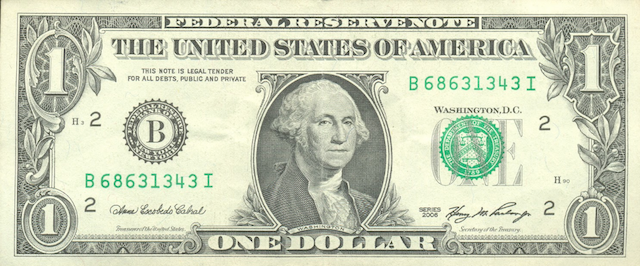


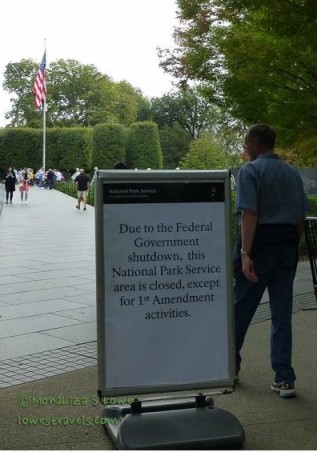





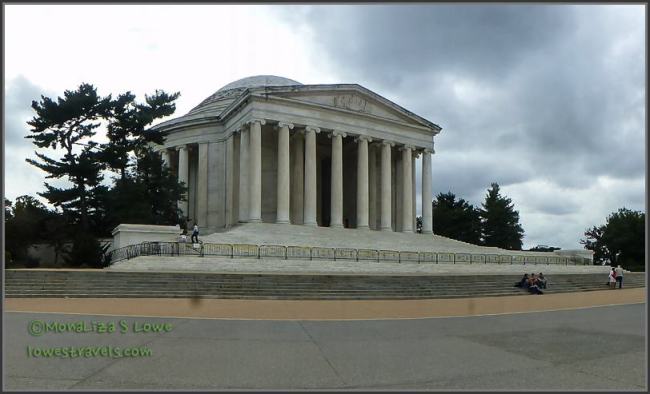
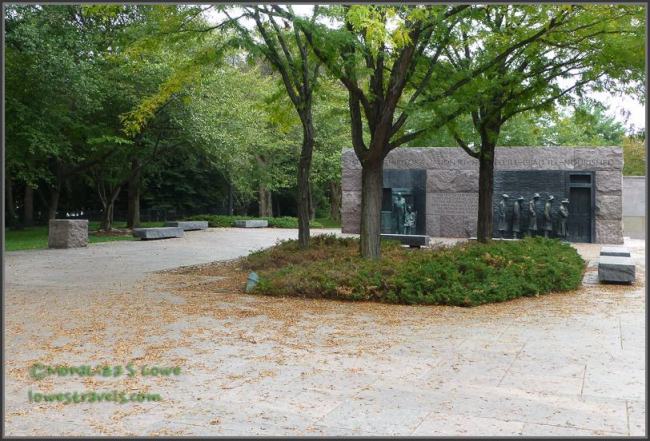
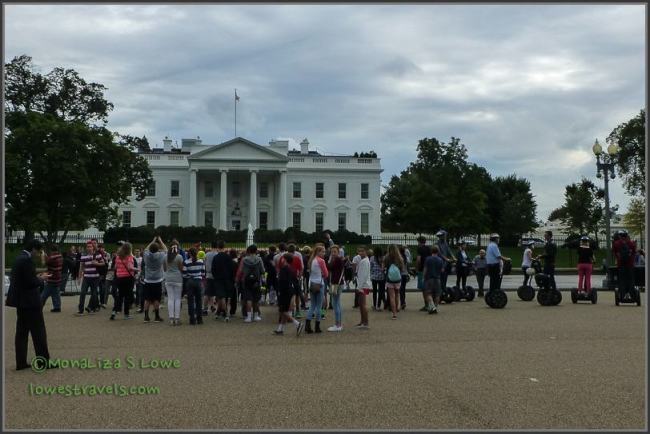
What’s with all the thirteens?
I always travel during the holiday-day. Like thanksgiving, people are gonna want to prepare dinner and they’d be inside the house. People don’t really drive to visit relatives on the actual day of the holiday. That’s perfect time for me to be on the road, or maybe go hiking.
Awesome timing, I can see you captured the spots without people around. And I know with Washington, that is very very rare to come by.
13 represents the original American colonies that declared their independence from Great Britain in 1776.
Our paper money is so interesting. I use to read a book to my math students that explained all the features on the dollar bill. Who knew so much went into a dollar bill!
You probably did hit DC at a great time because you avoided crowds. Glad you did get to see the museums. I can’t believe you walked! You’re great bike riders.
It was really interesting learning what goes on our paper money and tried to tone it down a bit for the post 🙂 Oh yeah, that was the big day of walking and more as we came back to see the museums.
I thoroughly enjoyed learning about the details and what they mean on a $1 bill!
Us too, did not know until we visited the BEP
Like you said, “timing is everything”. Looks like the shut down provided some great photographic opportunities…..no strangers in your photos. Thanks for the interesting tour of “money making”.
I just wished they gave us some sample money from that file of millions there. But no such luck, we just went away smarter.
Lovely photos of these beautiful buildings, Ingrid. So great to avoid the throngs. 🙂
Oh oh, I am going to call you mother, now, for calling me Ingrid. 🙂
Great info about the bills…
No crowds…now that’s a real treat! Great photos of the memorials.
I have never analyzed a bill before now…that was quite fascinating. DC is definitely on our list for next year.